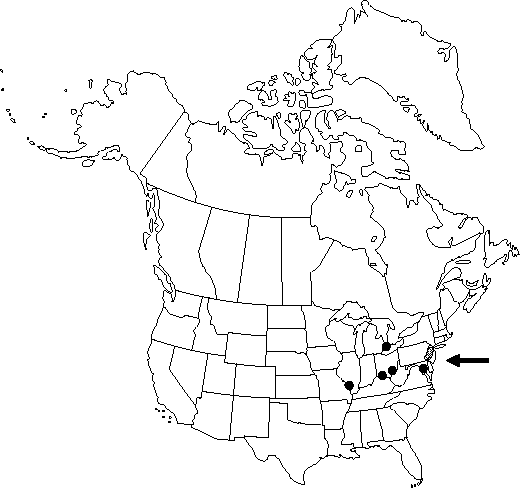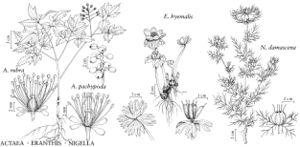Eranthis hyemalis
Trans. Linn. Soc. London 8: 304. 1807.
Leaves basal, 3–10 cm. Leaf blade 3–5 cm diam.; lateral leaflets 2-parted, segments 2–3-cleft, terminal leaflet 3-cleft. Inflorescences: involucral bracts 2 cm. Flowers cup-shaped, 20–45 mm diam.; sepals 15–22 × 5–11mm; petals shorter than stamens, abaxial lip ca. 2–2.5 times length of adaxial lip. Follicles: body 8–14 mm; stipe ca. 3 mm. Seeds ca. 2 mm.
Phenology: Flowering late winter–early spring.
Habitat: Mostly moist places
Distribution

Introduced; Ont., D.C., Ill., Ohio, N.J., Pa., native to Eurasia.
Discussion
Eranthis hyemalis is a garden plant that sometimes persists after cultivation and occasionally becomes established locally. It has been reported for Newfoundland but it is probably not established there.
Eranthis cilicicus from southeastern Turkey, usually with more leaflets and smaller flowers, may be distinguished from E. hyemalis in gardens but not in the wild. Hybrids between the two species are referred to as E. ×tubergenii.
Selected References
None.
